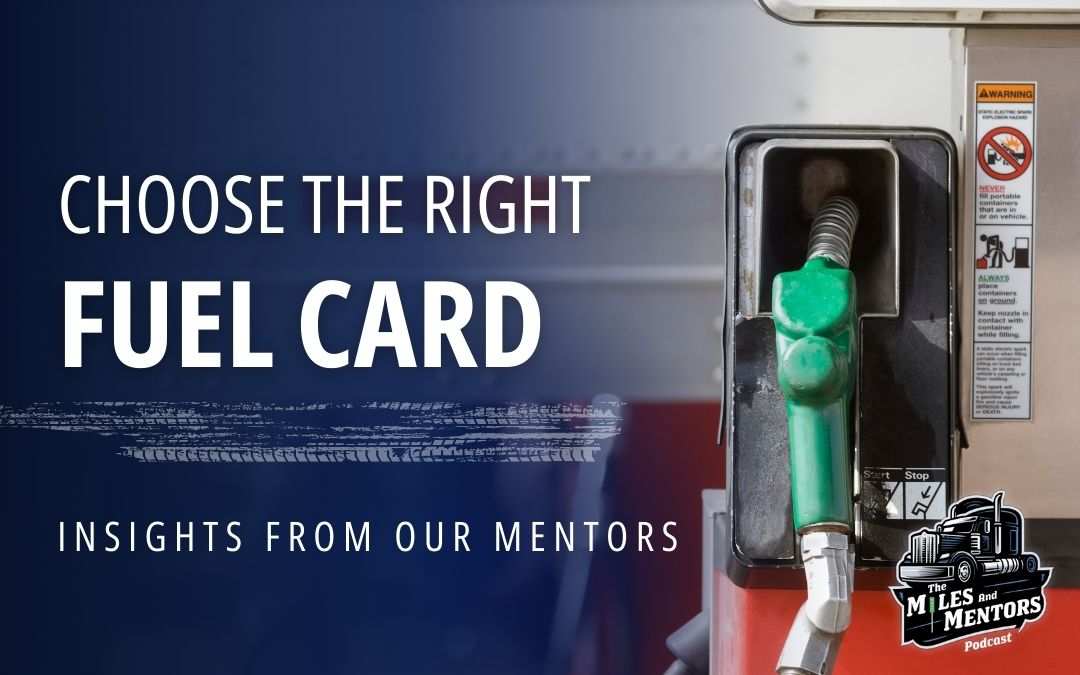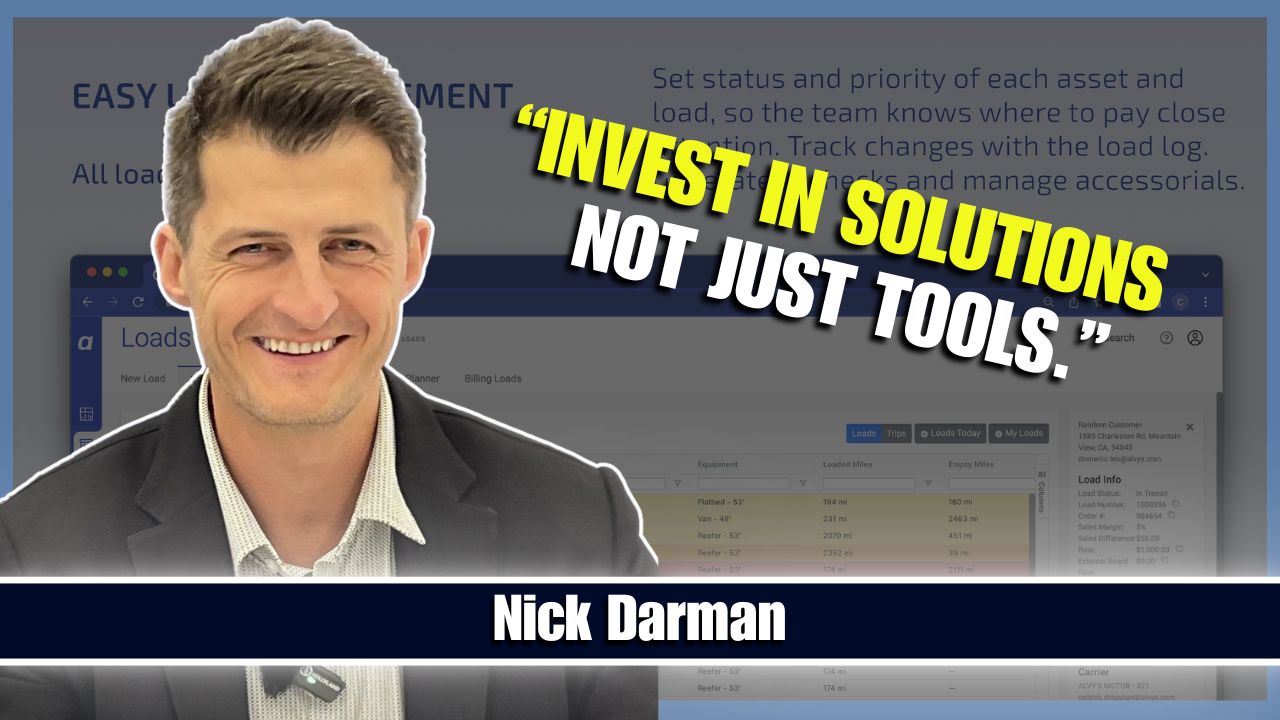For new carriers and owner-operators, managing fuel costs is one of the biggest challenges and opportunities in the business. With diesel prices unpredictable and margins already tight, the right fuel card can make a measurable difference on every mile you drive. But with so many options, fees, networks, and offers on the market, choosing the right one isn’t always straightforward.
In Episode 4 of the Miles and Mentors Podcast, Rob McCutcheon, Vice President of Strategy and Growth at TAFS, shared practical advice for owner-operators trying to build smarter businesses. One topic he touched on was how fuel savings and spending discipline directly impact profitability. In this article, we’re building on that mentorship with a closer look at what matters when choosing a fuel card and how to use one strategically, not just conveniently.
Fuel cards aren’t just about discounts. They’re about control
It’s tempting to think of a fuel card as just a way to save a few cents per gallon. And while discounts are important, Rob encourages carriers to think bigger. Fuel cards, when used right, provide structure and control over one of your largest recurring expenses. They help you track spending, manage limits, prevent fraud, and identify patterns that can improve your bottom line over time.
Choosing the right card starts with knowing how and where you operate. Some cards are optimized for large fleets. Others are designed for small carriers running under their own authority. If you’re on your own or just getting started, you want a card that fits your reality, not one that locks you into a system built for ten trucks.
Network coverage affects your actual savings
One of the biggest mistakes Rob sees carriers make is choosing a fuel card based solely on advertised discounts. A card might claim to offer 20 to 30 cents off per gallon, but if it’s only accepted at fuel stops you rarely use, the savings are meaningless. What matters is where the card works and whether it’s accepted along the lanes you actually run.
Before committing to a card, look at the provider’s network map. Are their partner stations located along your routes? Do they include brands you trust or regularly use? A smaller advertised discount at a stop you fuel at twice a week is often more valuable than a bigger discount you’ll never reach.
Hidden fees can erase your savings if you’re not careful
Rob emphasized that transparency matters. Some fuel card programs offer strong discounts but bury fees in the fine print. You might see transaction fees, minimum usage requirements, late payment penalties, or high-interest rates on balances if you’re not paying attention. These costs add up quickly and can wipe out the benefit of the program.
Before signing up, carriers should review the full fee schedule and ask direct questions. Are there monthly charges? Is there a fee for each swipe? What happens if you use the card outside the preferred network? If the company isn’t willing to walk you through the details clearly, that’s a red flag.
Use your fuel card to monitor, limit, and improve spending
Beyond discounts, many fuel cards come with back-office tools that give you visibility into your fuel usage. Rob pointed out that when you can see how much you’re spending, where you’re spending it, and what kind of trends are forming, you can start to tighten things up. These insights are especially important for small carriers trying to scale without overspending.
Some cards allow you to set daily or weekly spending limits per driver, lock purchases to fuel only, or get real-time alerts on unusual activity. These features help prevent fraud and reduce the chance of misuse, whether you’re running solo or managing a small team.
Don’t assume one card fits all. Compare based on how you operate
Rob’s mentorship always comes back to knowing your numbers and running your business intentionally. Choosing a fuel card is no different. Some cards, like the TCS Fuel Card, are built for small carriers and offer zero transaction fees at in-network stops. Others, like the WEX Fleet Card, come with robust reporting and broad acceptance but may include more administrative overhead. Cards like DAT One, RTS Fleet One, and Comdata all have their place, but only if they match your business model.
If you run mostly in one region, a regional card with strong local partnerships might save you more than a nationwide option. If you’re growing fast, make sure the program can scale with you and won’t penalize you for increased volume. The best card for your business is the one that fits how you fuel, not how someone else does.
Savings only matter if you’re consistent
Rob was clear that tools like fuel cards are only effective if used consistently. Signing up for a program, then ignoring the preferred network or skipping the card altogether at the pump, is a missed opportunity. Savings add up over time, but only if you’re disciplined.
He also emphasized that trucking is full of small decisions that, added together, create real financial outcomes. The route you run, the way you maintain your truck, and how you manage your expenses all matter. Choosing the right fuel card is just one piece of that puzzle, but it’s one of the easiest to get right with a little research and the right questions.
Need more mentor advice?
If you’re operating under your own authority and looking to make every dollar count, choosing the right fuel card is a smart place to start. But don’t rely on discounts alone. Look for the card that matches your routes, protects your bottom line, and supports your growth as a carrier.
At Miles and Mentors, we connect new and experienced carriers with the knowledge and relationships they need to make confident business decisions. If you want help choosing a fuel card or connecting with vetted partners who specialize in small carrier solutions, fill out the form below. And don’t forget to subscribe to the podcast to keep learning from people like Rob McCutcheon, who’ve helped thousands of carriers build businesses that last.



